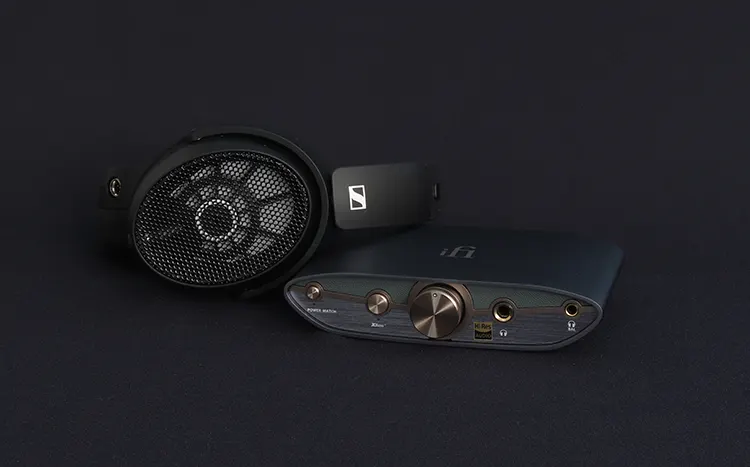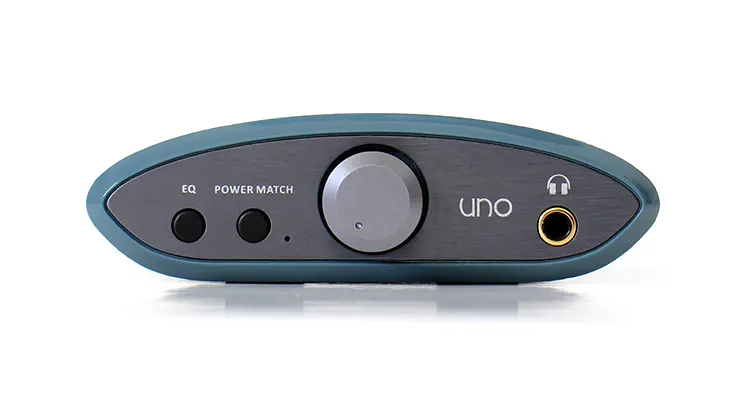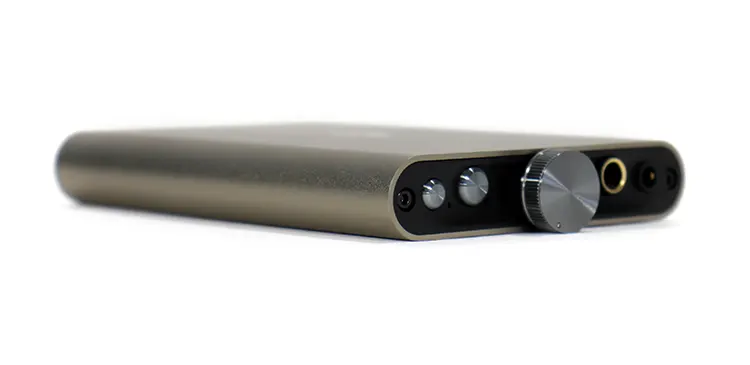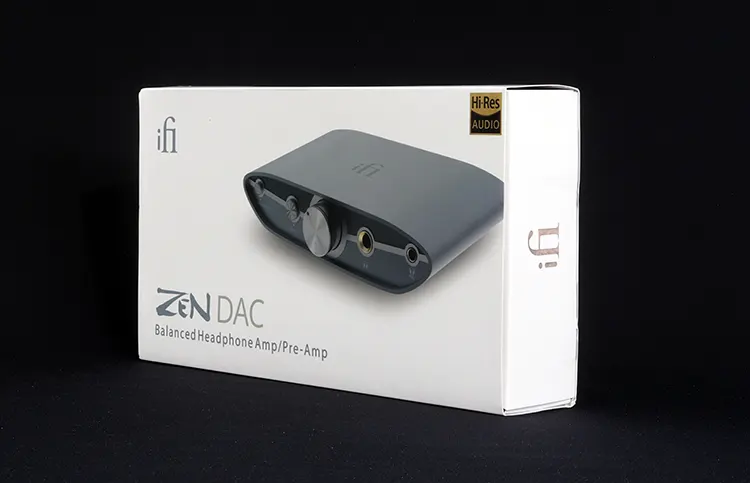Sound Impressions
I spent 5 straight days listening to the iFi audio ZEN DAC 3 and used my trusty HIFIMAN Sundara, the HE400se, the Sennheiser HD 490 PRO Plus, and the Arya Organic.
I also used FiiO’s FD15 to test volume control channel imbalance and noise levels. To test the overall fidelity of IEMs, HIFIMAN’s Svanar was used and the ORIVETI OH700VB.
Summary
The overall sonic characteristics of the ZEN DAC 3 can be described as analog with a smear of digital clarity. It’s full-bodied, full-spectrum evenly produced frequency response, and a spoon full of class-A warmth.
It’s almost unbearable to have that XBass+ feature there and not use it because it brings forth details in the bass that were not present in the stock tuning and it lives up to the claim that it restores bass because notes become distinct and with potential once engaged.
The ZEN DAC 3 doesn’t have a massive amount of power, but the bass response comes through in a neutral tone and flat without the feature. There’s plenty of bass texture but more of it with the Xbass+ engaged and the feature takes this unit to another level.
A good thing about the feature is that it restores the bass response but it doesn’t affect the midrange and lets all the mid-band information come forth, in a rather forward manner and revealing way. The mids are produced smoothly and with a smudge of forwardness creating a good sense of presence.
The high frequencies are improving on all the iFi audio DACs and amplifiers. I would argue it’s probably an end-product of the reworking done within the power circuitry to produce a darker background, absent of noise, that brings the high frequencies out of the dark category and sounds sharper than on the previous ZEN DACs.
Staging & Dynamics
It seems as though iFi found a way to increase headroom by a small margin and that translates into a dynamic response increase.
Transients are quick and responsive on the ZEN DAC 3. Plus the darker background helps bring each recorded character forward.
The overall iFi audio ZEN DAC’s soundstage size depends highly on the recording and there’s no helping narrow-sounding recordings because there’s no XSpace feature. It tends to give the listener what the source has to offer and nothing more.
It can produce a definitive stage but one that caters to precision over width and size. What helps the soundstage is the dark background and low noise floor iFi was able to obtain this time with the ZEN DAC 3.
Synergy
Power
To get the bad out of the way, the iFi audio ZEN DAC 3 is not for those who want to power up some hard-to-drive headphones but there’s only a handful of headphones I would not recommend this device for.
What surprises me is how cool it runs, even when you use high-volume levels on long listening sessions.
The iFi audio ZEN DAC 3’s dynamic response improves if you use a power source like iFi audio’s iPower adapter. I would use one with a 2 amp minimum, 5-volt output rating. That way you get the full energy output.
Pairing
Headphones that produce a flat bass frequency response like the Sennheiser HD 490 PRO Plus benefit greatly from iFi’s Xbass+ feature and it lifts the bass to a point where it seems better balanced with the other frequency bands.
A headphone like the MEZE Audio 99 Classics also benefits from the Xbass+ system but some could find that combo with the feature engaged to be overwhelming, some will love it.
If you like IEMs then I could say that most will never need more than what the ZEN DAC 3 can produce. I find most IEMs with Asian tuning flat in the bass area and the Xbass+ cures that.
It introduces the element of body within the bass region on IEMs like the Svanar that although it’s an excellent performer in the vocal region, they tend to sound slightly dry in the bottom end.
Select Comparisons
iFi audio UNO
Technical
I consider the iFi audio UNO the baby model of the iFi audio family. It’s small but it packs a punch and has some features not found on any other iFi audio product.
For example, the UNO has a button up front that allows you to select from 3 different sound curves that are designated for gaming, music, or movie watching.
To be honest, I like the UNO on the flat mode because it sounds good enough to me as is. It uses a single ESS ES9219MQ in conjunction with a Comtrue CT7601 USB bridge. It seems to be the GO Link in disguise.
The UNO can handle the three major digital music formats. It handles PCM, DSD, and MQA files but not with the prowess and the same capability as the ZEN DAC 3.
Design
The UNO is small and can fit anywhere on any desktop and I would say it’s a good candidate for people who are always on the go because you can easily take it with you. But of course, it’s more at home, at home, just like the ZEN DAC 3.
The case is made from Polymers and doesn’t sport a metal construction with knurled metal knobs. It’s the price you pay for going budget.
The rear panel is not as busy as the ZEN DAC 3 back panel, and it only includes a set of RCA plugs and one USB-C port. The ONE is a simple device and is a good candidate for a first-timer.
Performance
We can only compare the single-ended side of each model and to be fair. Both models have similar power output ratings but it seems that you can obtain a sliver more current from the ZEN DAC 3 with a well-rated power brick.
The iFi audio UNO is a good performer but you get what you pay for, in this case, it’s a high-value piece of gear, but the ZEN DAC 3 is more so and you get more features.
The UNO is not as smooth sounding as the ZEN DAC 3, especially in high-frequency production. Both produce flat frequency response curves but the ZEN DAC 3 wins on frequency extension and impactfulness in presentation.
iFi audio hip-dac 3
Technical
I’m going against the grain here because of a few reasons. One reason is that the hip-dac is technically a portable device but who’s to say you can’t use one in a desktop scenario?
The iFi audio hip-dac 3 also sits within the same price bracket but has more features, has a higher-rated power output, and can be used on the go since it has a built-in 2200mAh rechargeable battery.
The hip-dac 3 also comes with more accessories and it comes with 3 cables. One is a Lightning cable and the other two are USB variants allowing you to use the hip-dac 3 out of the box with lightning connector equipped gear.
The hip-dac 3 has an iEMatch whereas the ZEN DAC 3 has the Power Match feature on the front panel alongside the Xbass+ button giving the user better gain control overall.
Design
The hip-dac 3 is a smaller, portable device that is made with a metal shell and a good deal of quality components. But so is the ZEN DAC 3.
The hip-dac 3 has a convenience when it comes to external power because it uses a now-common USB-C connection separate from the input signal.
The hip-dac 3 uses the battery as a power source since battery power is preferred over dirty, converted power but refinements within the ZEN DAC 3’s circuitry produce a clean background regardless of what power source you use.
Performance
Performance-wise, it’s hard to distinguish these two. Both models use Burr-Brown DACs and an XMOS USB section plus they both use iFi’s custom Opamps and that makes them sound similar in tonal character.
The hip-dac 3 has a slightly higher power output rating of 400mW but if you listen to both models what strikes me as different is that the hip-dac 3 sounds a touch hotter and produces a more forward presentation.
The hip-dac 3 seems to be tuned for the Urbanite whereas the ZEN DAC 3 is calmer in timbre. Their tuning seems to be true to their name.
The hip-dac 3 has a modern, powerful, and forward presentation which is preferable on a portable device while the ZEN DAC 3 is a calmer presentation and more suitable for chilling out at home. It makes sense.
My Verdict
If you’re looking into obtaining a great-sounding all-in-one DAC amplifier without breaking the bank, something robustly built, and elegant-looking, then the iFi audio ZEN DAC 3 is an excellent choice.
It has appearance improvements and sonic improvements, plus the XBass+ feature is an improvement over the previously implemented TrueBass feature.
Just don’t expect massive amounts of output power. But to solve that you could always pair it with a ZEN CAN 3 to beef up the power section later on.
The series 3 lineup from iFi is turning out to be a great line of components and certainly improved versions over past iterations. The ZEN DAC 3 is a component that you can buy blindly, expect performance, and not be disappointed.
iFi audio ZEN DAC 3 Technical Specifications
- Input: USB type C
- Game console Compatibility: Sony PS5, Nintendo Switch
- Formats: PCM 768kHz/ DSD512/ DXD768/ MQA decoder
- DAC: Bit perfect DSD and DXD DAC by Burr-Brown
- Line output section: Balanced 4.4mm 2V / 6.2V max / 4.2 fixed
- Line output section: Single-ended RCA 1V / 3.3 max / 2.1 fixed
- Line out impedance: Balanced 4.4mm 200Ω / single-ended RCA 100Ω
- SNR: 113DBA @ 0 dBFS
- DNR: 113DBA @ 0 dBFS
- THD-N: Balanced 4.4mm 0.0015% @ 0 DBFS / Single-ended RCA 003% @ 0 DBFS
- Headphone output RMS power: Balanced 4.4mm 70mW @600Ω, 300mW @ 32Ω
- Headphone output RMS power: Single-ended 18mW @ 600Ω, 210mW @32Ω
- Max power: Balanced 4.4mm 390mW @64Ω, single-ended 6.35mm 210mW @ 32Ω
- Output impedance: ≤1Ω
- SNR: 109DBA @ 0 DBFS (6.2V, 4.4mm / 3.3V, 6.35mm)
- DNR: 109DBA @ 0 DBFS (6.2V, 4.4mm / 3.3V, 6.35mm)
- THD-N: Balanced 4.4mm 0.005% (2V @ 600Ω) / Single-ended 6.35mm 0.013% (1.27V @32Ω)
- Frequency response: 5Hz to 90kHz
- Power supply requirements: USB-C or DC 5V / 0.5A center +ve
- Power consumption: No signal 0.5W / max signal 2.5W
- Dimensions: 158 x 115 x 35m ( 6.2” x 4.6” x 1.4”)
- Net weight: 456g (1lb)





